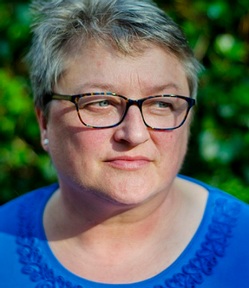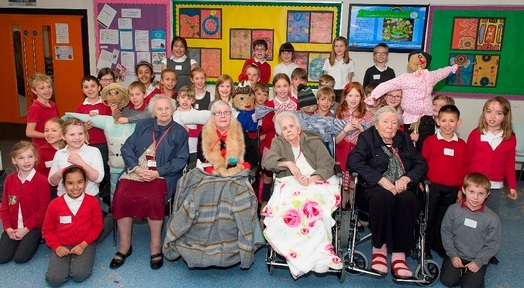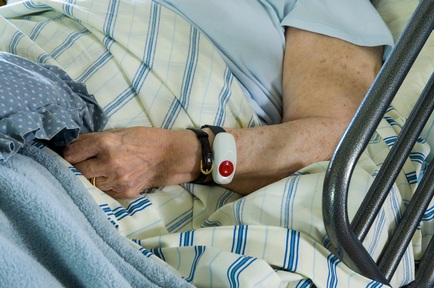Care homes can help cash-strapped councils by being an 'open book' says adult social care director
With less money for social care, an 'open book' conversation has to take place with all care homes' care costs made transparent says Margaret Willcox, the adult social care director for Gloucestershire County Council. 
“I could tell you what adult social care looked like in 1976”, says the newly-appointed vice president of the Association of Directors of Adult Social Services (ADASS), who is halfway through her 41st year of working in the sector.
Recalling funding in previous decades she says “There was more money around. The funding was more stable and more predictable.” And she says planning for funding “was more stable, for sure”.
This is in stark contrast to the present status quo. “We’ve lost about 31 per cent of our funding in social care” she says, referring to the (ADASS) survey of 147 directors which revealed English councils’ adult social care budgets had suffered a collective cut of £4.6bn since 2010.
After training as a nurse (both psychiatric and general), before specialising in dementia care, Ms Willcox worked in the third sector before returning to the NHS and local authorities in joint roles.
 She says: “We’ve always been in a position in the public sector that if one part had money and the other part didn’t, as long as you worked together you could manage the demand.
She says: “We’ve always been in a position in the public sector that if one part had money and the other part didn’t, as long as you worked together you could manage the demand.
“There were times when local authorities had significant increases in money for various projects. And similarly the health service would. We rarely got them at the same time but one would always help the other. But now we both, I think, have significant levels of demand and insufficient investment."
Greater transparency would be 'very helpful’
Faced with financial constraints and in response to the struggle of care homes to get local authority fees that reflect the level of care they give, Ms Wilcox says “I think it would be good if we got to a situation where we have a sort of open book process.
"So that, if you look at the cost of care exercise, the residential homes tell us how much something costs and therefore we can see what it is we’re buying. And then we would buy according to what we need.
“The cost of everything a care home provides should be laid out clearly for local authorities to see. That would be very helpful and similarly we would lay out our costs; what is our expenditure, how do we calculate what we pay for.”
In ‘her patch’ in the Gloucestershire area, she says this dialogue with care homes has begun. “Certainly locally we’re talking about it at the moment. About how do we work out what actually someone needs.
“There are geographical differentials because of the cost of buildings, travelling, staff. We’re always open to looking at that. “The care home market is quite a broad range. There will always be care homes that are outside of a local authority budget.”
Ms Willcox says her own Gloucestershire County Council, has seen 'no significant reductions' in social care because its budget was protected for the last four years. However, cuts are now being made in proportion to other councils.
£700m extra a year shortfall
On the subject of how much extra England’s adult social care services actually need, she quotes a Local Government Association estimate - "we’ve calculated that we would need an additional £700m a year by 2019/20 in order to be able to cope with the levels of demand, the growing numbers of older and disabled people, the Deprivation of Liberty Safeguards (DoLS) work and the National Living Wage".
DoLS allow restraint and restrictions to be used but only if they are in a person's best interests. Care homes or hospitals must ask a local authority if they can deprive a person of their liberty by requesting a standard authorisation. With six assessments having to take place before a standard authorisation can be given, this puts pressure on councils who need more money to recruit extra staff to complete assessments.
Living longer
“We know medical interventions and good quality of life means disabled people are living longer and there are more of them. You have more people surviving at birth. Then you have the life expectancy of those disabled people is greater now than it used to be. You also have people with learning disabilities now living much longer and enduring such conditions as dementia, which would have been unheard of 15 years ago.
“It’s a positive thing but nevertheless we need funding to be able to look after them.”
In 2014, Margaret Willcox’s name was included in the Queen’s New Year’s Honours list and she was awarded an OBE for services to vulnerable people.
“Generally we’re in a position where we have to decide what we can support and what we can’t support."
’The Barnet Graph of Doom’"
In 2012, research by the London Borough of Barnet came up with a diagram showing how the cost of social care would take every penny of Barnet council’s budget within 20 years if councils didn’t have sufficient funding and demographics, such as over 65 population predictions, became a reality. It became infamously known as the ‘Barnet Graph of Doom’.
“Most councils would just be social services they wouldn’t be able to afford to fix pot holes, spend on infrastructure, collect bins, or anything else because all of the money would need to be spent on looking after the people who are vulnerable. That’s not what people expect from their council.”
Directors of adult social services departments now follow national criteria for eligibility, with people needing substantial or critical care prioritised. Those requiring substantial or critical care are described as individuals who cannot do certain tasks themselves and don’t have anybody else to do them for them such as getting up, having their meals, getting dressed, attending hospital appointments.
“Someone in full-time residential care we would expect the home to take them to social events, whereas in the past we might have paid for a carer to take them as well as the full time social care."
To save money, adult social care departments have had to reduce staffing, back office functions, maximise the way people travel and limit conferences and attendances to events. “We can’t compromise on training/personal development. Most of us write our own letters these days. We certainly have less infrastructure around us. We do more things directly.”

She says there are things care homes are doing to help. "For example when care homes open their doors to the local community inviting local older people to lunch, Christmas parties. The intergenerational work they do to include local children and young people into care homes."
But making less and less money go further is a battle no council can win in the end. She knows the struggle for more money from the Government continues to be all uphill.
Ring fencing social care
On the role of social care minster Alistair Burt, Margaret Willcox says: “He needs to continue to remind the Government that social care needs to have secure funding in the same way as the NHS has, if it’s going to survive to be a productive service and indeed if it’s going to survive to complement the NHS."
“If people can’t come to social services, they will end up at the door of their GP and their local hospital. And, if we don’t have the funding in the future, we would have to look at what can we stop doing that we do now.”
Latest News Analysis
 04-Sep-19
Extra £1.5 billion announced for social care in Chancellor's Spending Review
04-Sep-19
Extra £1.5 billion announced for social care in Chancellor's Spending Review
 02-Jul-19
Department of Health forced to rethink care homes' nursing rates after legal challenge
02-Jul-19
Department of Health forced to rethink care homes' nursing rates after legal challenge
 18-Jun-19
Overnight care workers forced to sleep in offices and told 'bring your own bedding'
18-Jun-19
Overnight care workers forced to sleep in offices and told 'bring your own bedding'
 14-Jun-19
Back in the closet: Third of care home staff have had no LGBT+ awareness training
14-Jun-19
Back in the closet: Third of care home staff have had no LGBT+ awareness training
 11-Jun-19
PM candidates on social care: Rory Stewart calls fixing care an 'unfinished revolution'
11-Jun-19
PM candidates on social care: Rory Stewart calls fixing care an 'unfinished revolution'